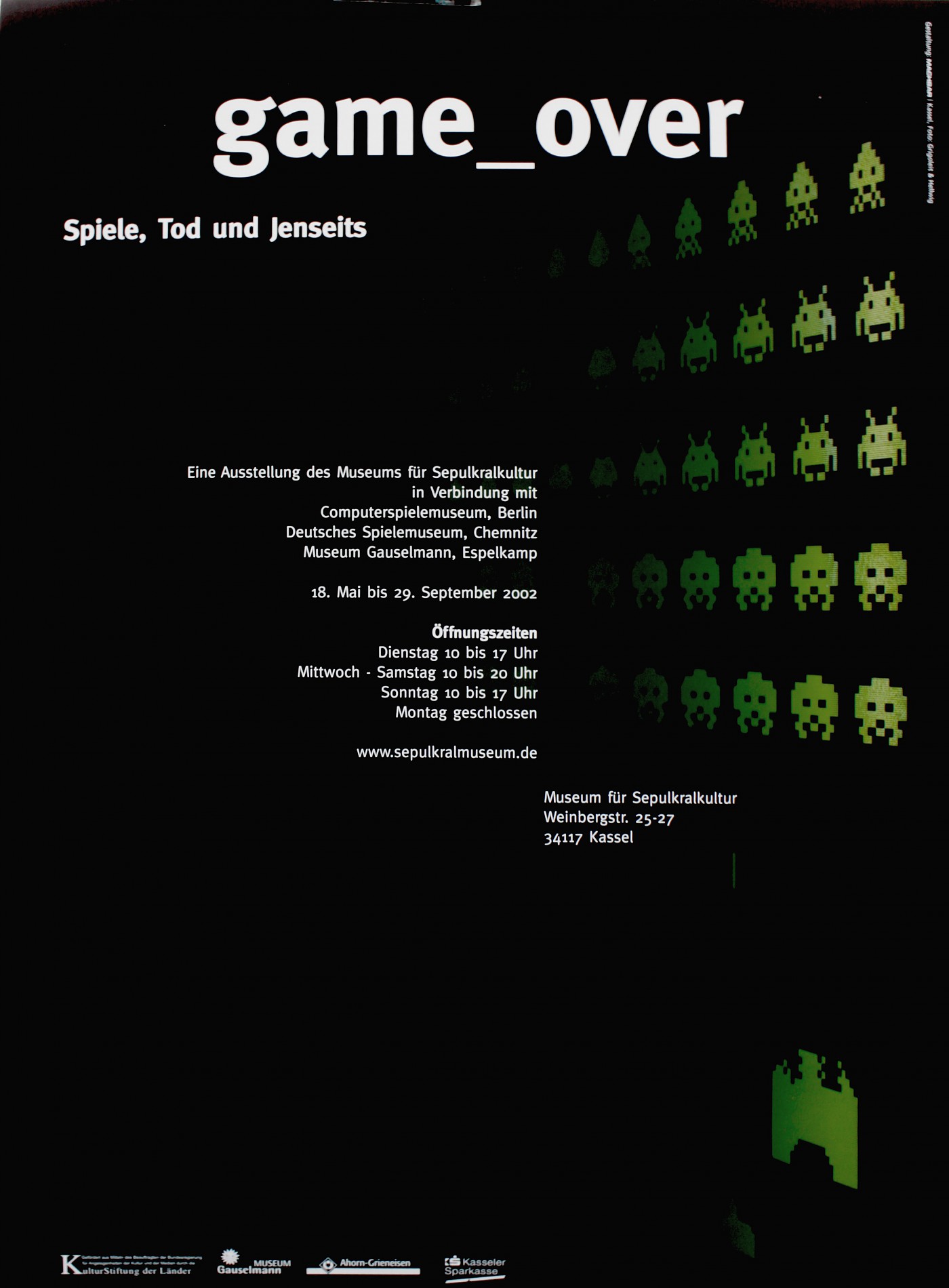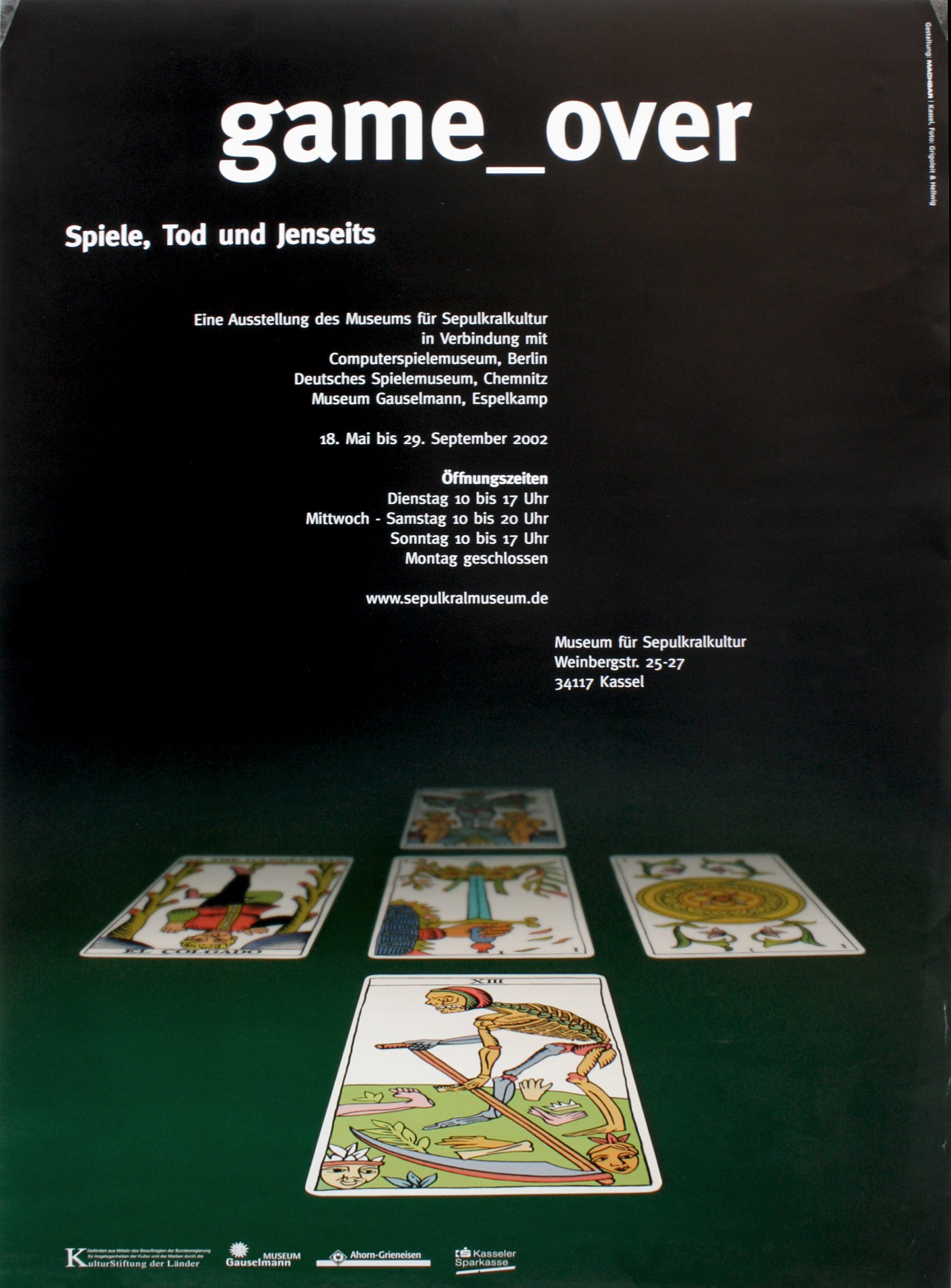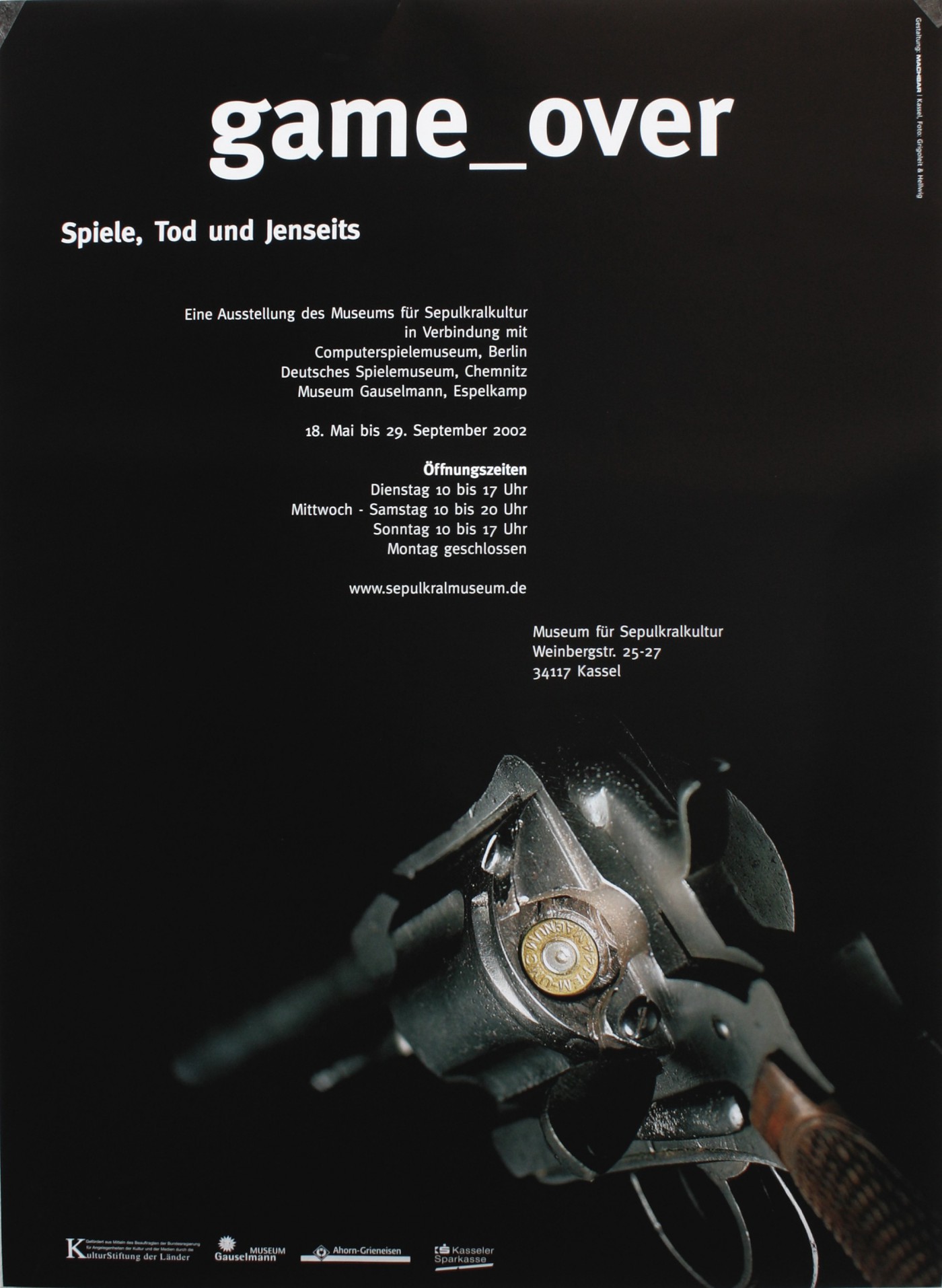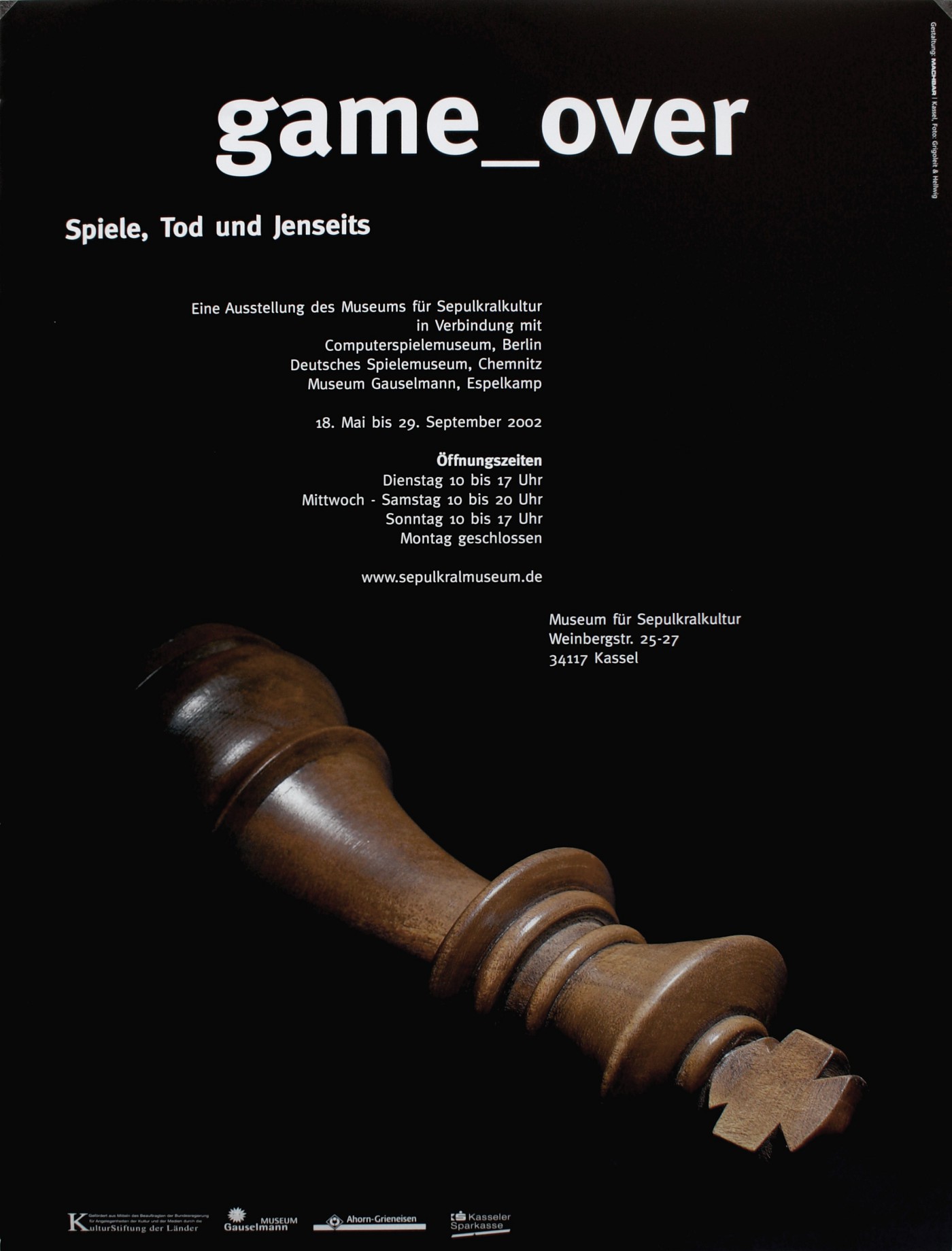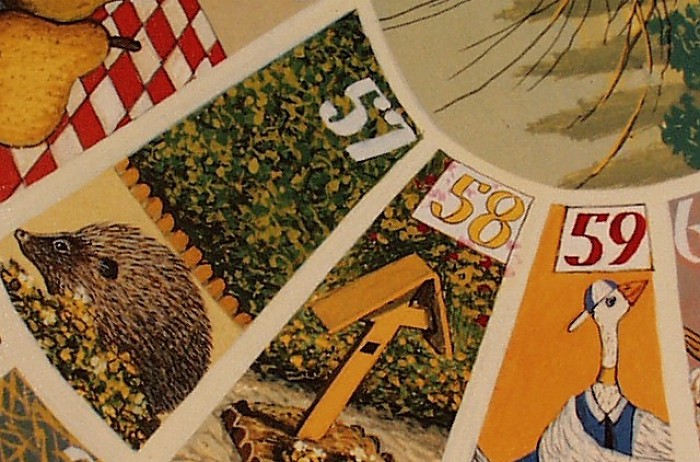

18. May 2002 – 29. September 2002
Games, death and the beyond
An Exhibition of the Museum for Sepulchral Culture in Cooperation with Museum Gauselmann, Espelkamp, Computerspielemuseum, Berlin and Deutsches Spielemuseum, Chemnitz
Games are as old as mankind, even older than writing and reading. As far history is traced back references to playing and dancing people can be found everywhere: on cave drawings, burial gifts, sarcophagi, but also myths, fairy tales and fables, old written records. Today, games are part of our consumer and leisure society.
The many connections between play and death, which were originally to be found in the cultic-religious area, have been overlaid with numerous changes and trivializations of original game ideas. Human beings used to play in order to appease the gods, to depict the world order and the course of the celestial bodies or to practice their own struggle for existence. At funerals and wakes people played to appease the dead and to defeat their own fears. The basic patterns of the games in this are the change from life to death and the recurring new beginning.
In many games of our time, death is visually present, not only in computer and machine games, but also, for example, in the harmless game of goose, in which death appears on field 58 and orders the players back to the beginning. Some games, on the other hand, have disappeared completely, such as "Journey to Eternity". On the other hand, tarot and fortune-telling cards with their mysterious pictorial motifs – including death, grave, widower, jester or Last Judgement – are experiencing an unexpected renaissance.
Card games for luck and money were once considered the devil's prayer book, were condemned and forbidden. The same applied to dice and oracle games as well as to sorcery and magic. “Halloween”, which also became popular in Germany, brings the personified death banished from Punch and Judy shows and picture books back into the children's play world. But Punch and Judy has always feared neither death nor the devil.
In five sections, the exhibition playfully illuminates the manifold relationships between games and death in the past and present: game paradise, game hell, game purgatory, game of life and chess – the game of kings.
Arbeitsgemeinschaft Friedhof und Denkmal e.V.
Zentralinstitut für Sepulkralkultur
Museum für Sepulkralkultur
Weinbergstraße 25–27
D-34117 Kassel | Germany
Tel. +49 (0)561 918 93-0
info@sepulkralmuseum.de



